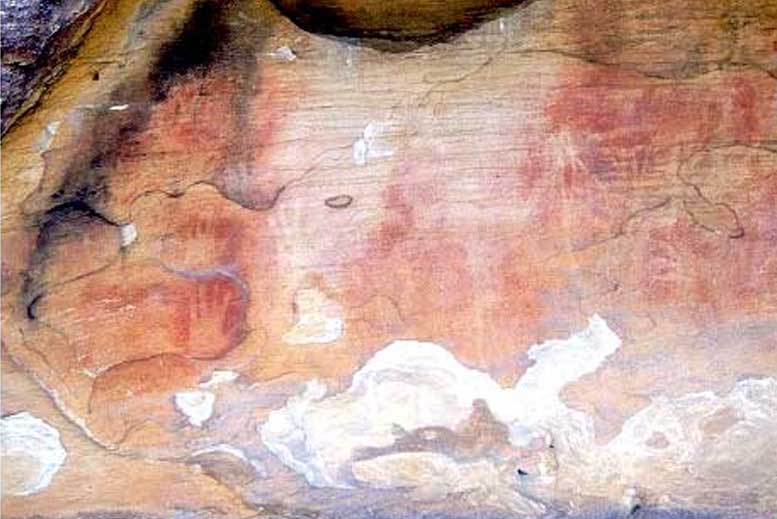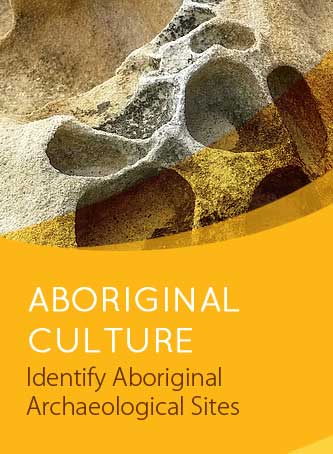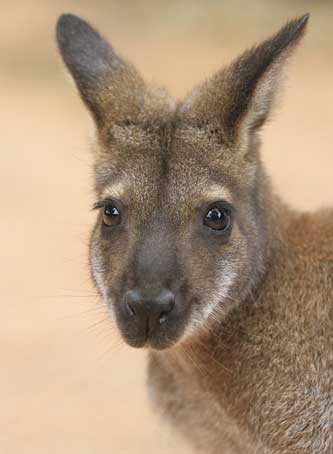
Saving the Aboriginal Cultural Landscape
Ancient Aboriginal Sandstone Artifact Sites at Walkabout Park
Dating of the sites
The sandstone engravings or “petroglyphs” in the Sydney Basin and Hawkesbury area are mostly a few hundred years old.
However, it is virtually impossible to accurately date these engravings. The tradition of regrooving sites while teaching and telling stories, means that the original engravings could be thousands of years older than the currently visible etchings.
Ochre paintings and stencils are more easily dated as the time of use of the different types of ochre has been well researched. The ochre of the handstencil cave at Walkabout Park is believed to be more than 4,000 years old.
Aboriginal lore teaches that many of these sites were originally made by the ancestors or creation hero figures, and not by mortal people, making them as old as there have been people on the Australian continent.
New sites discovered
The rangers at Walkabout Park are continually exploring the area, which is steeped in Aboriginal history.
There have already been a number of intriguing archaeological finds, and we know there are still many cultural treasures to be found at Walkabout Park. With “Connecting with Country” as our philosophy, the team at Walkabout Park is continually looking for Aboriginal sites that are yet to be re-discovered.
Sites in Calga at Walkabout Park and in the vicinity include sanstone engravings or “petroglyphs”, standing or sentry stones, stone arrangements, ochre painting and hand-stencils, axe grinding grooves, cave shelters and dwellings, and middens.
In February 2006, members of the team found a new carving site just off to the side of Walkabout Park’s renowned giant bird-hero figure stone engraving site. The new site is very weathered and worn, but there is no question that the engraving consists of two very small bird images, each similar to the giant bird-hero figure nearby. The images are each only about 6 inches across, about one hundredth the size of the big bird-hero figure engraving.
Since then, new sites are being regularly discovered in the Calga Valley, from where the tracks of Walkabout Park traverse the ridgeline following ancient footsteps, down into “Calga Valley” that Walkabout Park fought a 10 year political and court battle to save from sand mining.
These new sites include a midden cave, standing stones, engravings of ancestral hero-figures, and stone tools and artifact scatters.
Land and Environment Court victory
 Walkabout Park won a huge legal victory in December 2015, stopping the NSW State Government and Rocla, an overseas international mining company, from destroying vast tracts of land next door to Walkabout Park. Rocla’s intention was to dig a 56 hectare wide, 35 meter deep, hole in the ground to extract sandstone, crush it into sand, and truck it to Sydney to use to build houses.
Walkabout Park won a huge legal victory in December 2015, stopping the NSW State Government and Rocla, an overseas international mining company, from destroying vast tracts of land next door to Walkabout Park. Rocla’s intention was to dig a 56 hectare wide, 35 meter deep, hole in the ground to extract sandstone, crush it into sand, and truck it to Sydney to use to build houses.
A major precedent was set, which has relevance to protection of other cultural sites across Australia. “The Precautionary Principle” was applied to the cultural landscape. Before this decision, it had only been applied to the natural landscape. The Precautionary Principle holds that, if it can be demonstrated that a development is likely to cause significant environmental harm, then the onus of proof shifts from the objector to the developer. The developer must prove that they will not do harm (instead of the objector having to prove that they will).
Rocla and the NSW State Government argued that the benefits of quarrying far outweighed the fact that they would remove habitat for protected endangered animals, protected endangered water dependent eco-systems, and remove around 30 million tonnes of rock from the aquifer, the ancient subterranean water store that is the wellspring for the local environment as well as the catchment for the Gosford drinking water supply, produce tiny breathable silica dust that could affect human health, and devalue homes and businesses in the area.
Even more concerning was their attempt to downplay the hugely significant Aboriginal cultural artifacts in and around the mine site.
The Court heard from esteemed archaeologist and anthropologist and Central Coast expert on Aboriginal Women’s Places Dr Annie Ross (engaged by Rocla, but who ended up arguing against the quarry) that one of the known sites, referred to as “The Women’s Site”, is the most valuable Aboriginal Women’s Site left in NSW. The Court heard from Tracey Howie of Guringai Tribal Link, elder and teacher Uncle Paul Gordon and Sharon Hodgetts of Darkinjung Land Council. Woman Elder Margaret Katherine, brought down from the Nothern Territory by Rocla, gave testimony which supported the local Aboriginal people’s fight to save the Calga Valley. While visiting the site, the Court saw how new unregistered sites, never before recorded, revealed themseves in the landscape as we walked through the bush with the Commissioners.
All the Aboriginal cultural knowledge holders, whether appearing for the quarry or against the quarry, ended up convincing the Court that the area must be preserved.
The Land and Environment Court ruled that not only the known Aboriginal sites had to be protected, but that the entire cultural landscape connecting these sites had to be protected too. The Court was convinced that there is so much more to be found in this area that would be likely to increase the cultural values of the known sites, and could themselves be of equal or even greater cultural value than the known sites. Most significantly, the Court refused to give the quarry an “amber light” to walk in front of the bulldozers to ensure no unregistered sites were damaged. The Court held that there was too much risk because, if something was found, it may increase the landscape value even more making it imperative that everything (not only visible sites) be preserved and, if that were the case, irreversible damage to the landscape would have already been done.
The Court said “No!”
Explore Walkabout Park
The rangers at Walkabout Park are continually exploring the area, which is steeped in Aboriginal history.
There have already been a number of intriguing archaeological finds, and we know there are still many cultural treasures to be found at Walkabout Park. With “Connecting with Country” as our philosophy, the team at Walkabout Park is continually looking for Aboriginal sites that are yet to be re-discovered.
There is an ongoing battle to protect the Cultural Landscape
Hanson, the new owners of the local sandstone quarry and the surrounding land, are keen to expand. We don’t believe that they would be able to do so in view of the Land and Environment Court verdict (as explained below), but we must remain vigilant. Having invested in the quarry, they want to get a commercial return on their investment. In 2016 Hanson applied to add rock crushing equipment to their operations. The community is concerned that, with the added ability to crush rock, the quarry will go deeper (now that they can’t go wider) than they were previously able to do. The environmental impacts have not been fully assessed. In June 2017 Hanson was given permission to proceed with the rock crusher but with some restrictions. As at 25 June 2017, the community is considering whether these conditions are satisfactory, or whether they should be appealed.


